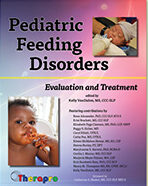On June 16, 2020, Therapro hosted a very popular webinar presented by Dr. Kate Barlow on the topic of Oral Motor Treatment Strategies. In past blog posts, we reviewed great takeaways from the webinar, as well as strategies for assessments that Dr. Barlow shared with viewers. Dr. Barlow also covered some effective treatment strategies during the webinar, as attendees reviewed:
This seminar provided great ideas on how to provide intervention strategies to children with oral motor difficulties. TH
Well presented course, instructor passionate and knowledgeable. As a PT I appreciate the information, insights, and learning content that was presented. JW
Kate is passionate about helping families and children with feeding issues. She presents a variety of strategies and explains why and how these strategies support positive outcomes. The strategies presented can also be implemented in school based practice which is a challenging setting to service and document feeding therapy. ME
Thanks – it was very helpful! Many great takeaways that I will implement in my practice right away. ML
In this post we will take a look at the treatment strategies shared by Dr. Barlow during the Oral Motor Treatment Strategies webinar.
Dr. Barlow gave useful background information to help viewers understand the “why” when planning treatment. For example, she spent time reviewing type 2 muscle fibers – did you know that most of the muscles used for swallowing are type 2 muscle fibers? Given this information, it is easy to understand why it is so important not only to use resistance but also to increase the resistance and workload when planning treatment for oral motor strengthening. Dr. Barlow also reviewed that age and cognitive consideration should be taken into account when deciding on a treatment plan. Check out some of these other effective treatment ideas that Dr. Barlow covered:
- To work on lip closure, try an activity as simple as blowing kisses! This is an easy strategy in which all members of the family can easily participate – without any tools!
- For lip and tongue awareness, Dr. Barlow shared the clever idea of putting a spoon in a cup of ice water for a few hours. The cold spoon can be used in a number of ways to help bring awareness to these areas.
- For tongue lateralization, Dr. Barlow shared some strategies using handheld munchables.
- Dr. Barlow also covered some tools that can be used in oral motor treatment. For example:
- Bubbles and blow toys are fun ways to develop lip strength.
- Lip Bloks are a helpful tool when working on tongue retraction.
- Z-vibes can be used for so many things like developing cheek strength, working on lip closure, and developing lip and tongue awareness.
- Straws are a fun tool that can be used to work on lip closure and tongue retraction.
Check out the full video to watch Dr. Barlow demonstrate some of these great treatment strategies and demo some tools she uses in her own treatment!

